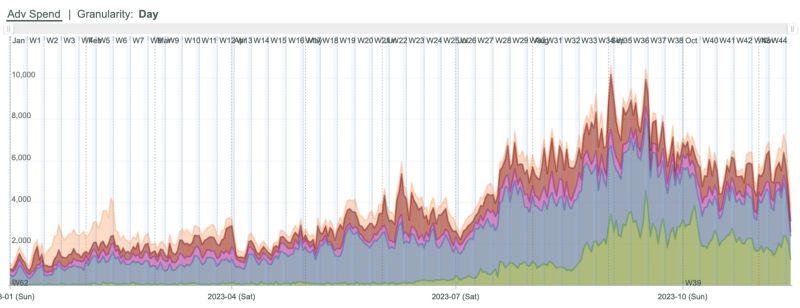Our audiences are now our greatest asset as the value of audience data is unlocked with the first generation of digital advertising and media infrastructure. Yet the new asset class for publishers and brands faces challenges with managing and maintaining the value when faced with issues caused by non-transparent environments such as audience leakage. Audience Insights is thrilled to have TrustX CEO and thought leader David Kohl addressing the issues around data leakage.
Publishers use the term “audience data leakage” to describe the problem of ad tech companies sucking out the value of their first-party audience data only to re-target those audiences on other (usually less costly) publisher sites.
There’s a misconception in our industry that by using a “new-gen” identity solution, encryption will solve the problem of audience data leakage. This graph demonstrates that the assumption is, sadly, not correct.

Let me explain.
Starting right around July 1, two large-scale TRUSTX publishers began testing one such new-gen identity system. On their behalf, we dutifully passed these IDs through the bidstream, resulting in substantial incremental spend on Safari browsers, which as everyone knows, no longer participate in the third-party cookie ecosystem. The results were very promising for the two publishers.
But we found a highly unexpected and unfortunate side-effect. The graph below represents spend on Safari browsers across TRUSTX publishers that were NOT testing any new-gen IDs. The data shows that after July 1, three of our four top DSPs bought more or less their usual amount of Safari traffic on these non-participating publishers (i.e., publishers through which Safari traffic was no more addressable than prior to July 1). However, one DSP (in green at the bottom right) suddenly began buying Safari traffic on these publisher sites even though this traffic was devoid of any third-party identity.
The data strongly suggests that this DSP, which previously bought a negligible amount of Safari traffic, was able to leverage the new-gen identifiers supplied by the two large-scale publishers to re-target the same Safari users on other publisher sites.
This is classic audience data leakage. It’s what has caused more than a decade of premium publisher inventory commoditization and it’s increasingly a risk to advertisers using new-gen IDs to activate custom buying segments from their valuable first-party customer data.
Buyer beware if you’re pushing identity through the bidstream. New-gen IDs will have a lot of value in connecting buyer and seller audiences, but distributing these IDs through the adtech supply-chain is simply repeating the sins of the past.
Peter Bordes
CEO of Collective audience
Founder & Managing Partner Trajectory Ventures. Lifetime entrepreneur, CEO, Board Member, mentor, advisor and investor.
Obsessed with the infinite realm of possibility in disruptive innovation driving global digital transformation in technology, cloud-based infrastructure, artificial intelligence, data, DevOps, fintech, robotics, aerospace, blockchain and digital media and advertising.

